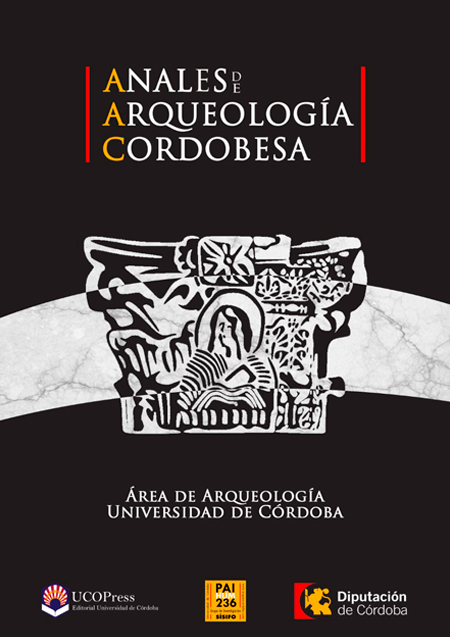Local and imported stones used on the official epigraphic programs of Tarraco until the julio-claudian period
DOI:
https://doi.org/10.21071/aac.v28i0.10189Keywords:
officinae lapidariae, local lithotypes, white marbles, imported marmora, municipal forum, theatre, templum divi Augusti.Abstract
This paper presents the results of macroscopic analysis of the inscriptions from public spaces of Tarraco. It has taken into account the period between the Late Republic and the Julio-Claudian period. A total of 35 epigraphic monuments have been considered. Combined with the archaeological information, the results allow detecting a remarkable heterogeneity of stone materials, in contrast to later periods in which uniformity is imposed. Also, there are highlight significant differences in the choice of material, depending on the destination and users of the epigraphic supports. Furthermore, questions relating to the topographical context, reading and interpretation of texts and dating of the inscriptions are debated.Downloads
Download data is not yet available.
Downloads
Published
2017-12-21
How to Cite
RUIZ RODRÍGUEZ, J. C. (2017). Local and imported stones used on the official epigraphic programs of Tarraco until the julio-claudian period. Anales De Arquelogía Cordobesa, 28, 33–62. https://doi.org/10.21071/aac.v28i0.10189
Issue
Section
ARTICLES
License
Aquellos autores/as que tengan publicaciones con esta revista, aceptan los términos siguientes:- Los autores/as conservarán sus derechos de autor y garantizarán a la revista el derecho de primera publicación de su obra, el cuál estará simultáneamente sujeto a la Licencia de reconocimiento de Creative Commons que permite a terceros compartir la obra siempre que se indique su autor y su primera publicación esta revista.
- Los autores/as podrán adoptar otros acuerdos de licencia no exclusiva de distribución de la versión de la obra publicada (p. ej.: depositarla en un archivo telemático institucional o publicarla en un volumen monográfico) siempre que se indique la publicación inicial en esta revista.
- Se permite y recomienda a los autores/as difundir su obra a través de Internet (p. ej.: en archivos telemáticos institucionales o en su página web) antes y durante el proceso de envío, lo cual puede producir intercambios interesantes y aumentar las citas de la obra publicada. (Véase El efecto del acceso abierto).


